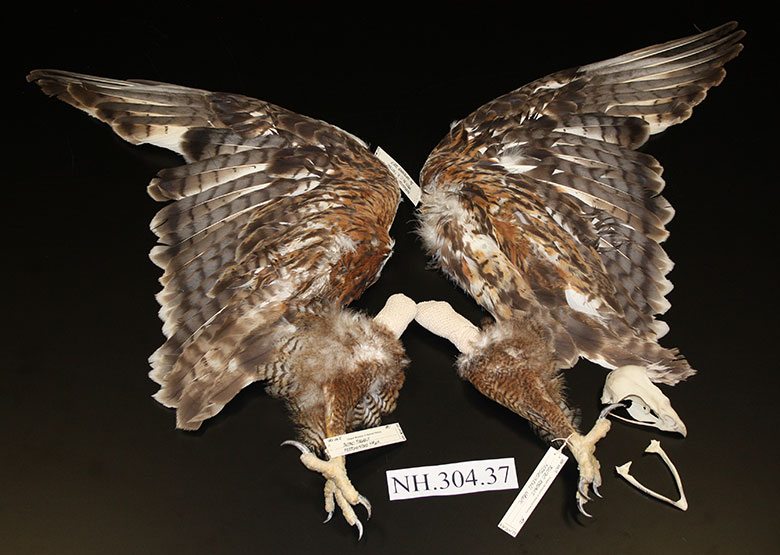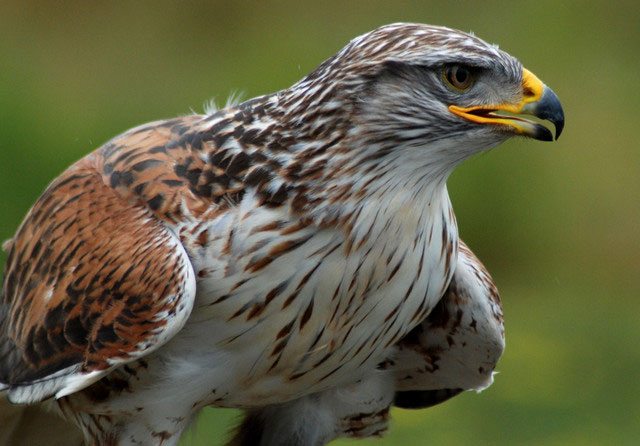Originally featured in Points West in Fall 2008
Ferruginous hawk (buteo regalis) specimen
Natural history museum collections preserve a record of life on earth. Well-documented biological specimens are prepared according to strict standards and studied by scientists from around the world. Each of these specimens contains unique scientific information, and research collections are therefore the most highly valued and carefully conserved materials in natural history museums.
Scientists may examine a specimen to document a number of characteristics of a given species, or specimens may be prepared as mounts for public exhibition and educational use. The preserved wings, talons, and skull of this ferruginous hawk (Buteo regalis) provide a good example of a specimen prepared for educational programming.
The broad wings of this hawk enable it to soar easily in open country, but limit its effectiveness in forested environments. The long, sharp talons and stout legs allow the ferruginous hawk to kill relatively large prey, including jackrabbits and cottontails. The sharp beak and large gape make it easy for this raptor to easily tear through flesh and bolt down large chunks of food. Participants in some of our special programs are able to handle such specimens to develop a greater connection with our natural world.
Ferruginous hawk. Scientific name: Buteo regalis. Received from U.S. Fish and Wildlife Service. NH.304.37
Post 071







